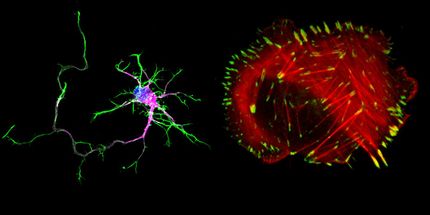Finding a protective mechanism for retinal cells could save sight
Determining what triggers the death of retinal cells, called photoreceptors, could hold the key to stopping blinding disorders caused by a wide range of eye diseases, Yale School of Medicine researchers report in Investigative ophthalmology & Visual Science .
Several blinding disorders are known to cause the breakdown of photoreceptors. Caroline Zeiss, associate professor of comparative medicine and ophthalmology at Yale School of Medicine, and her colleagues sought to identify a mechanism in photoreceptors that could be targeted to prolong their survival. Using preserved animal and human retinal tissue, they studied different diseases with a range of genetic mutations that caused photoreceptor death, such as age-related macular degeneration and retinal pigmentosa.
In the diseases Zeiss and her team studied, photoreceptors died from a variety of causes, but the team found that all of the diseases had one common element — activation of a family of molecules called CREB1/ATF1. It was unclear, however, whether CREB1/ATF1 contributed to photoreceptor loss, or was an attempt by photoreceptors to delay their death. To differentiate between these two possibilities, the team examined CREB1/ATF1 in retinas treated with a drug known to preserve photoreceptors. Protected photoreceptors expressed much higher amounts than unprotected retinas, suggesting that CREB1/ATF1 was part of the protective mechanism.
"Not only did we find that the drug activated the novel CREB1/ATF1 photoreceptor pathway, but we found that this activation was caused by stress," said Zeiss. "This suggests that CREB/ATF1 may be an innate protective response that could be used to achieve broad spectrum preservation of the retina."
"This is the first time that any protective signal within photoreceptors has been identified across such a broad range of eye diseases," Zeiss added. "By finding a common way in which photoreceptors react to stress, it may be possible to develop new therapies to preserve vision."
Zeiss said the next step in the research is to try to identify drug targets that could activate the CREB1/ATF1 pathway. The team could potentially screen thousands of compounds and look at their ability to turn on CREB1/ATF1 in retinal tissue.
Original publication: Investigative Ophthalmology & Visual Science 2009, Vol. 50.
Most read news
Topics
Organizations
Other news from the department science

Get the life science industry in your inbox
By submitting this form you agree that LUMITOS AG will send you the newsletter(s) selected above by email. Your data will not be passed on to third parties. Your data will be stored and processed in accordance with our data protection regulations. LUMITOS may contact you by email for the purpose of advertising or market and opinion surveys. You can revoke your consent at any time without giving reasons to LUMITOS AG, Ernst-Augustin-Str. 2, 12489 Berlin, Germany or by e-mail at revoke@lumitos.com with effect for the future. In addition, each email contains a link to unsubscribe from the corresponding newsletter.





















































